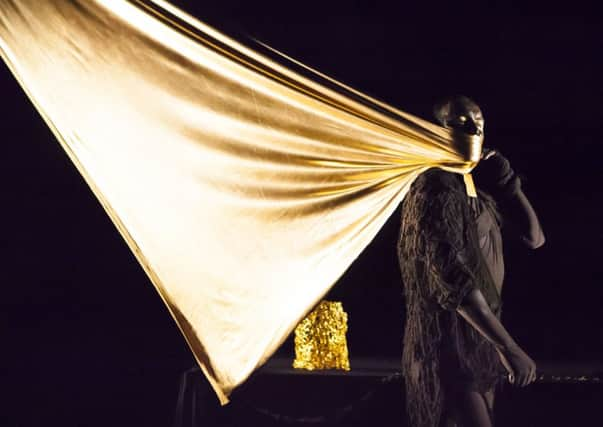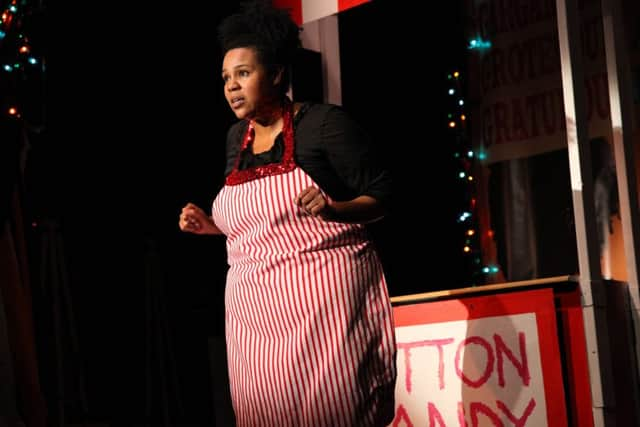Solo Fringe shows to make you forget monologues


The actress Maureen Beattie tells a story about her time working for the Royal Shakespeare Company. She was part of the ensemble which, over a two-year period, staged a sequence of eight Shakespeare history plays under director Michael Boyd.
Working for so long together, the actors developed an unusual degree of familiarity. Secure in their relationships, they would think nothing of commenting on each other’s performances and offering suggestions. They could treat each other as professional equals without defensiveness.
Advertisement
Hide AdThe problem came when her RSC stint was over: “The next few jobs I was in, I would say to the other actors, ‘D’you know, I don’t think that works,’ and they would go, ‘Who do you think you’re talking to?’”


Explaining herself only made matters worse. “I’m sorry, I’ve just been with the RSC,” she would say, making her sound like the world’s greatest show off. “I couldn’t win,” she laughs.
Now, of course, Beattie is at the other end of the spectrum as the solitary star of three one-woman plays by Jennifer Tremblay. Alone on the stage, she has no-one to advise or to offend.
The third and newest part of this trilogy, The Deliverance, was one of The Scotsman’s opening clutch of Fringe First awards, a recognition not only of Beattie’s mesmerising performance as a woman trying to bring her dying mother peace, but also of a consummate production by Muriel Romanes and Stellar Quines.
In that week, she wasn’t the only solo performer to pick up an award. Among those joining her were Gary McNair, whose A Gambler’s Guide to Dying is about his granddad’s love of a bet; Dan Bye, whose Going Viral is about a man dealing with a global epidemic; and Pat Kinevane, whose Underneath is about a life lived beneath the radar.
Among last week’s Fringe Firsts were Jim Cartwright’s Raz, Desiree Burch’s Tar Baby and Joe Sellman-Leava’s Labels. Those three solo shows are joined in today’s final list of Fringe Firsts by yet more monologues: A Girl Is A Half-Formed Thing, A Reason To Talk, What I Learned From Johnny Bevan and Penny Arcade: Longing Lasts Longer.
Advertisement
Hide AdIt means more than half of the best new plays on this year’s Fringe, as judged by The Scotsman’s critics, are single-handers. Even taking into account the economics of the Fringe, which make short small-scale plays attractive to producers, this is an unusually high percentage.
And this year, the effect has been amplified by the presence in the Edinburgh International Festival by two formidable one-man shows by Robert Lepage and Simon McBurney. Staged in adjacent rooms in the Edinburgh International Conference Centre, Lepage’s 887 and McBurney’s The Encounter dazzled audiences with their scale and technical accomplishment, even though both filtered their vision through the lens of a single performer.
Advertisement
Hide AdWhat’s interesting about this is that, like Beattie at the RSC, Lepage and McBurney need no lessons in working with an ensemble. Although Lepage has a long history of creating solo shows going back to Vinci and Polygraph in the late 1980s, he is best remembered in Scotland for communally devised productions such as Tectonic Plates, The Dragons’ Trilogy and, in its formative stages, The Seven Streams of the River Ota.
Likewise, McBurney earned his reputation on the Fringe in the mid 1980s in what was then known as Théâtre de Complicité, a company that specialised in a highly physical style of ensemble theatre shaped by training in Paris with Jacques Lecoq. As with Lepage, the plays were often created through improvisation with the cast and could be seen not as a singular vision but as a collective expression.
Even with all the many technicians, stage managers and off-stage collaborators, the one-man format of 887 and The Encounter suggests a more individualistic approach. These plays are reflective and inward looking, less interested in dramatising societal conflicts than in exploring the performer’s relationship with the world.
Lepage considers the influence of his father; McBurney is repeatedly interrupted by the voice of his daughter. Even though both take on grand themes – the role of memory in political life in 887; the nature of communication in The Encounter – they do so from the point of view of the individual.
I disagree with those who argue that this amounts to self-indulgence. To a greater or lesser extent, artists always put themselves into their work (think of Tennessee Williams in The Glass Menagerie or Eugene O’Neil in Long Day’s Journey into Night), so there’s no reason to suppose the “autofiction” of Lepage or the audio adventures of McBurney are anything unusual in that respect.
All the same, there was a point in the middle of the Fringe when the number of me-me-me plays (not all of them monologues) was beginning to grate. It wasn’t any show in particular, just the cumulative impact of performer after performer believing themselves to be the most interesting person in the room. Such solipsism appeals to the willingness of audiences to identify with an actor’s emotions (“How sad their illness made me feel!”), but is frequently a cheap substitute for a deeper dramatic dilemma.
Advertisement
Hide AdThe best one-person shows go beyond this. They’re often the ones you forget were monologues at all, so vivid were the other characters they brought to life, so broad their vision of society as a whole. Their starting point may be with the individual (by coincidence, 887 and The Encounter both kick off with the actors talking about the way they use their mobile phones as stand-in memory), but by the time they’ve reached the finishing line they’ve taken us with them into territory of much weightier import.
Gary McNair hits home in A Gambler’s Guide to Dying not by asking for our sympathy over the death of his granddad but by telling a story about the value of living in the moment. That theme has broader relevance. Similarly, in The Deliverance, Tremblay presents the mother’s death as an unsentimental inevitability; what grips us is the quest to reconcile two estranged people.
Advertisement
Hide AdIf nothing else, Lepage and McBurney are great storytellers and, like all of the solo Fringe First winners, they tap into the need we had as children to make sense of the world by listening to fairytales.
Narrative has the power to take us from the particular and the introspective to the universal and the outward looking, something that the finest theatre, whether solo or ensemble, always does.